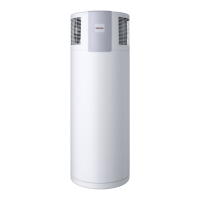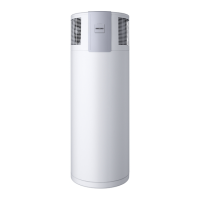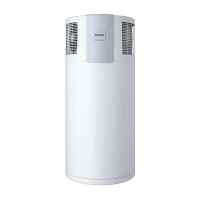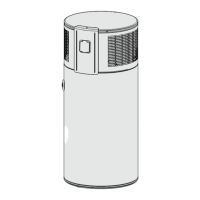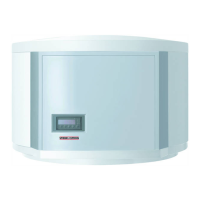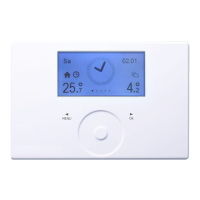Remove contaminants and blockages
immediately.
For the WWK300 AH and WWK300 z
AHP, it is recommended that the
electric booster heater be descaled
from time to time. this will result in
prolonged life fo the electric booster.
Your local contractor, who is familiar z
with the local water quality, should
identify for you the timing of the next
service.
Ask your local contractor to regularly z
check the safety assembly and the
electric booster heater.
The device is subject to mains water z
pressure. The expansion water drips
from the safety valve during heat-up.
Inform your local contractor of water
drips from the system after the heat-
up process has ended.
To protect the steel cylinder against z
corrosion, the interior is coated with
a special enamel and is furthermore
equipped with a protective anode.
Ask your local contractor to check the
protective anode regularly.
1.9 Troubleshooting by the user
No hot water
Should you fail to obtain hot water at any
time, you can take the following steps to
remedy that situation.
No electrical power
Check the fuse/circuit breaker in your fuse
box. If it has blown/tripped, replace/reset
the fuse/MCB. If it should blow/trigger
repeatedly, notify your local contractor.
Still no hot water, even though power is
available
Check, whether the air inlet/outlet is
blocked.
The thermoswitch trips out or the high
limit safety pressure limiter switches
the compressor OFF if the compressor
is overloaded due to excessive ambient
temperature or excessive air temperature
(>42 °C), or because of a fault in the
refrigerant circuit. Ask your local
contractor to remove the fault.
The thermoswitch automatically switches
itself ON again.
The high limit safety pressure
limiter must only be reset by your
contractor after he has removed the
cause of the relevant fault.
Other issues
Safety valve of the cold water supply line
drips
This may occur during the heat-up phase
and is completely normal.
The condensate drain drips
This always happens when the surface
temperature of the evaporator is lower
than the ambient dew point temperature.
For all other faults, consult your
contractor.
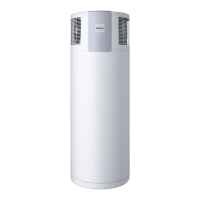
